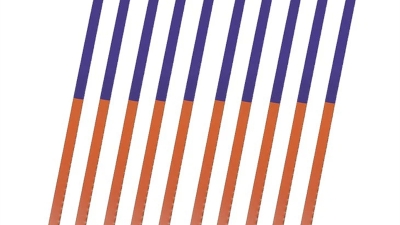The Ultimate Guide to Choosing the Best Saw Saw Metal Blade for Your Projects
Table of Contents
- Understanding Different Types of Metal Cutting Saw Blades
- Comparing Bi-Metal vs. Carbide-Tipped Blades for Metal Projects
- Exploring Specialty Blades: What They Do and When to Use Them
- How Material and Thickness Impact Blade Selection for Metal Cutting
- Maintenance Tips for Extending the Life of Your Metal Cutting Blades
- Cost-Effective Alternatives: Budget-Friendly Metal Cutting Blade Options
- Maximizing Efficiency in Metal Cutting: Insights from Industry Reports on EC32T-12IN BI-METAL Hacksaws Blade Performance
- FAQS
- Conclusion
- Related Posts
When it comes to metalworking, picking the right tools really can’t be overstated—especially when you're trying to find the best saw blade for cutting metal. I read this interesting report the other day from Grand View Research, and it kind of blew my mind: the global market for metal cutting tools is expected to hit around $16.5 billion by 2025! That just shows how much people are craving precision and efficiency these days.
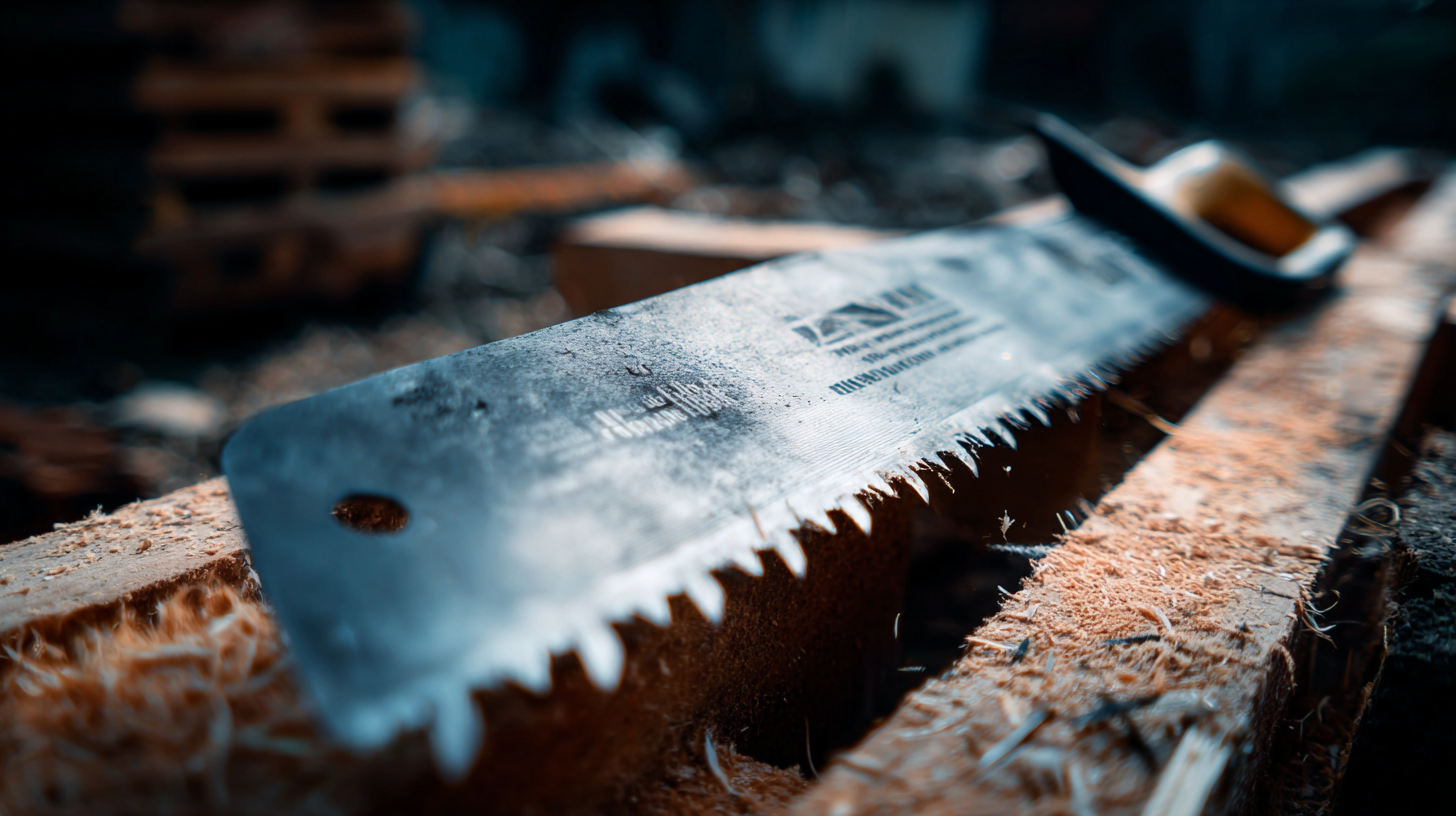
Back in 2003, Wenzhou Yichuan Tools Co., Ltd. jumped into this scene, and they've been rocking it ever since, making high-quality accessories for electric tools—think jigsaw blades, reciprocating saw blades, and planers. They really focus on quality, making sure both pros and DIY fans have the gear they need to get the job done faster and better. So, if you're scratching your head about which saw blade to pick, don’t worry—they’ve got your back. This guide will walk you through all the options out there, giving you the lowdown so you can pick the perfect saw blade for whatever project you're workin’ on.
Understanding Different Types of Metal Cutting Saw Blades
When you're working with metal, picking the right saw blade really matters. It can make a huge difference not just in how good your cut looks, but also in how smoothly your project goes. There are a bunch of different blades out there, each suited for different jobs. For example, carbide-tipped blades are pretty much the heavy-hitters—they last longer and stay sharp, so they’re awesome for cutting tough metals like stainless steel. I read in a recent report from the Metalworking Technology Association that these carbide blades can last up to twice as long as your standard bi-metal ones, which basically saves you money in the long run.
Then there’s the high-speed steel (HSS) blades, which are kind of the all-rounders. They work well for lighter tasks and are loved for holding a sharp edge—especially when you're dealing with softer metals like aluminum or copper. I saw a survey from the Cutting Tool Engineering Association that said more than 60% of folks in metalworking prefer HSS blades because they strike a good balance between performance and price, especially in small to medium-sized shops. And let’s not forget those specialized blades, like cold saw blades—these are great for super precise cuts at lower temperatures, which means less warping and longer-lasting blades. They’re especially handy if you need that extra precision and durability in high-end setups.
The Ultimate Guide to Choosing the Best Saw Saw Metal Blade for Your Projects - Understanding Different Types of Metal Cutting Saw Blades
| Blade Type | Material Cut | Teeth Count | Thickness (mm) | RPM Rating |
|---|---|---|---|---|
| HSS Blade | Steel, Aluminum | 24 | 2.5 | 5000 |
| Carbide Tip Blade | Stainless Steel, PVC | 60 | 3.0 | 7000 |
| Bi-metal Blade | Ferrous and Non-ferrous Metals | 10 | 1.5 | 3000 |
| TCT Blade | Aluminum, Copper | 80 | 2.0 | 6000 |
| Diamond Blade | Reinforced Concrete, Metal | 16 | 4.0 | 8000 |
Comparing Bi-Metal vs. Carbide-Tipped Blades for Metal Projects
When you're working on metal cutting projects, picking the right saw blade really makes a difference in getting those precise cuts and saving time. The market mainly offers two popular options: bi-metal blades and carbide-tipped blades. Both have their perks, depending on what you're actually cutting.
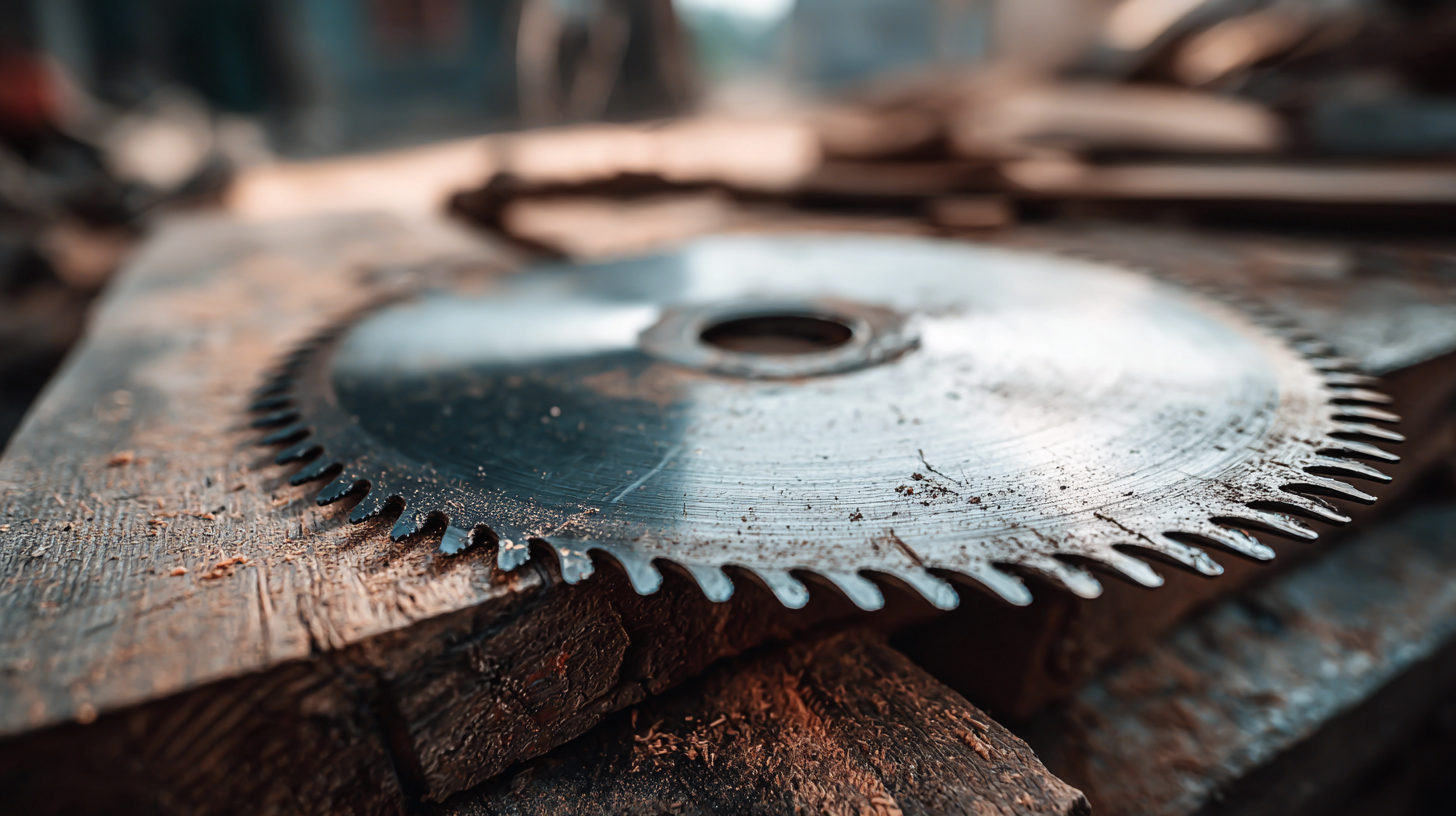 Bi-metal blades are usually made from high-speed steel and have a flexible backing, which makes them great for cutting softer metals or lighter tasks. They’re pretty tough, resist wear, and tend to last a good while—perfect for DIY jobs or occasional use in a workshop.
Bi-metal blades are usually made from high-speed steel and have a flexible backing, which makes them great for cutting softer metals or lighter tasks. They’re pretty tough, resist wear, and tend to last a good while—perfect for DIY jobs or occasional use in a workshop.
Now, if you're tackling tougher materials or thicker metals, carbide-tipped blades might be your best bet. They pack in super-hard carbide tips that handle heat well and give you cleaner cuts. While they cost a bit more, they’re definitely built for heavy-duty tasks or professional work where you need reliability and high performance. Knowing the key differences can really help you pick the right blade for your project—so you get better results and actually enjoy the process a little more.
Exploring Specialty Blades: What They Do and When to Use Them
When you're working with metal, picking the right blade really matters if you want things to go smoothly and get a clean, precise cut. There are special blades made for different jobs, and using the right one can totally boost your cutting game—and help your saw last longer. For example, a bi-metal blade is pretty versatile; it handles various materials like thin metal sheets without a fuss.
On the other hand, if you're dealing with thicker metals, a carbide-tipped blade is your best bet—it stays sharp and cuts through the tough stuff more easily.
Here's a quick tip: think about how thick the material is before you decide on a blade. Thicker stuff usually needs blades with more teeth so the cut stays smooth, while thinner materials are better suited for blades with fewer teeth – they can make quicker cuts and save you some time.
Oh, and don’t forget about diamond blades. Those are real champions for cutting through tough surfaces, like reinforced steel or really hard materials. Just a heads-up: when using a diamond blade, keep the saw steady and don’t rush it—going too fast can cause it to overheat.
Another thing to keep in mind: regularly check your blades for signs of wear and tear. Dull blades aren’t just annoying—they can be unsafe and mess up your cuts. If your blade looks like it's seen better days, swap it out ASAP to keep everything safe and running smoothly.
How Material and Thickness Impact Blade Selection for Metal Cutting
When you're choosing the best saw blade for cutting metal, it's pretty important to get a good handle on how the material and its thickness can affect your choice. Different metals need different types of blades to work at their best. For example, if you’re cutting softer metals like aluminum, high-speed steel (HSS) blades are usually the way to go. On the other hand, for tougher stuff like stainless steel or hardened alloys, carbide-tipped blades tend to do a much better job. Picking the wrong blade for the job can lead to uneven cuts or even damage to the blade itself—so yeah, it’s worth paying attention to.
Another thing to think about is the thickness of the blade. Thicker blades tend to be more stable and resist bending or flexing during heavy-duty cuts. That makes them perfect when you’re tackling big, tough projects. But if you're working on more delicate or detailed work, then thinner blades are usually better—they're more flexible and can handle tighter corners with ease. Just make sure to match the blade thickness not only to the metal you’re cutting but also to the saw you’re using. It’s all about getting those clean, precise cuts and making sure your project turns out just right.
Maintenance Tips for Extending the Life of Your Metal Cutting Blades
When you're working with metal cutting, how long your saw blades last and how well they perform really boils down to good maintenance. It’s honestly worth taking a few minutes to clean your blades regularly — trust me, it makes a difference. After each use, just wipe the blade down with a cloth soaked in a metal-safe solvent. It’s a small step, but it helps keep the blade sharp and your cuts smooth.
Another thing to keep in mind is how you store your blades. Keep them in a dry spot, ideally in a dedicated case or on a rack. Don't just throw them into a pile or stack a bunch together, ’cause that can damage the edges. Also, check your blades from time to time for any chips, dull spots, or signs of wear. If they’re looking beat-up, it might be time for a sharpening or even a replacement — better to avoid risking bad cuts or damage to your project.
And lastly, always follow what the manufacturer recommends, especially about usage and max RPM. Pushing a blade beyond its limits isn’t just bad for it — it can be dangerous. Sticking to these simple maintenance tips will help your blades last longer, cut better, and make your projects turn out just the way you want. Trust me, it’s worth the extra little effort!
Cost-Effective Alternatives: Budget-Friendly Metal Cutting Blade Options
When you're diving into metal cutting projects, finding the right blade can feel pretty overwhelming, especially if you're on a tight budget. Luckily, there are quite a few affordable options that still pack a punch in terms of performance—no need to break the bank. These budget-friendly blades are pretty versatile and can handle a bunch of different materials, so you can finish your projects smoothly without sacrificing quality.
One popular pick is the bi-metal blade. It's got this cool combo where the cutting edge is flexible like high-speed steel, but the body itself is made from a more durable carbon steel, so it holds up well. They're great for cutting through thicker metals, and you can usually find them at a reasonable price. Then there's high-speed steel (HSS) blades—another wallet-friendly option that offers good durability and accuracy. They're especially handy for those smaller tasks. Going with these alternatives not only saves you some cash but also opens up possibilities for more ambitious projects without stressing over the tool costs. Honestly, using these budget blades can really boost your workshop's efficiency, so you can spend less time worrying about expenses and more time doing what you love—creating and building.
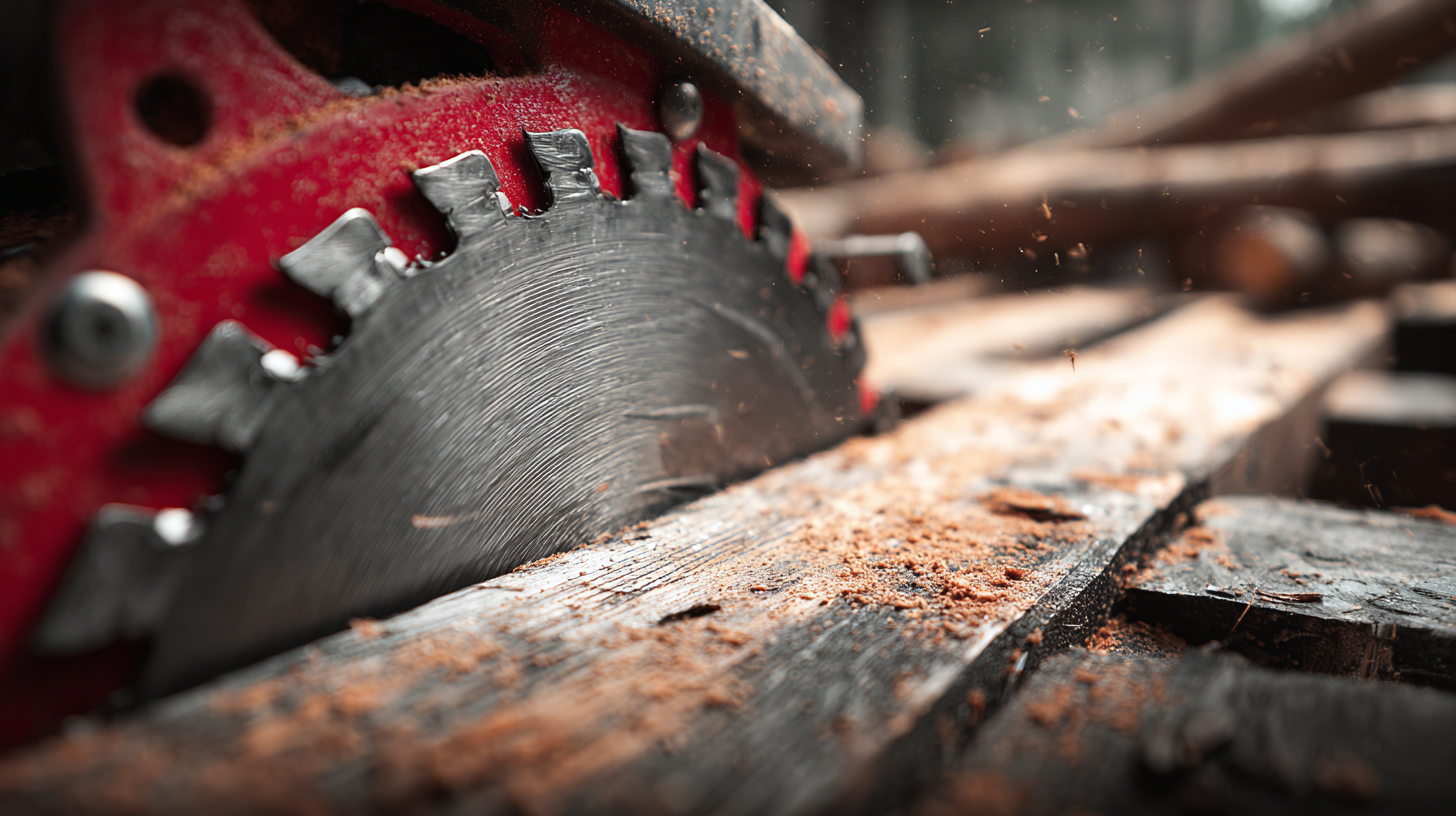
Maximizing Efficiency in Metal Cutting: Insights from Industry Reports on EC32T-12IN BI-METAL Hacksaws Blade Performance
Maximizing Efficiency in Metal Cutting: Insights from Industry Reports on EC32T-12IN BI-METAL Hacksaws Blade Performance
In the realm of metal cutting, the choice of tools can significantly influence efficiency and productivity. Recent industry reports highlight the EC32T-12IN BI-METAL hacksaw blade as a standout option for cutting various metals with precision. This fine-toothed saw, originally crafted for metalwork, has demonstrated unmatched durability and performance, aligning well with the needs of modern manufacturing.
According to recent evaluations, the EC32T-12IN BI-METAL hacksaw blade outperforms traditional blades in both longevity and cutting speed. Specifically, it boasts a wear resistance that extends blade life by up to 30%, making it a cost-effective choice for high-volume applications. Additionally, the blade's unique bi-metal construction allows for better shock absorption and flexing, significantly reducing the likelihood of blade breakage during heavy-duty operations.
Industry data also reveals that using the EC32T-12IN blade can enhance cutting efficiency by approximately 20%, particularly when working on tougher materials such as stainless steel and alloyed metals. This efficiency is crucial in settings where time and precision are of the essence. Thus, when seeking to maximize productivity in metal cutting applications, investing in high-quality tools like the EC32T-12IN BI-METAL hacksaw blade can yield substantial benefits, ensuring both quality results and a favorable return on investment.
FAQS
: The type of metal being cut, the desired precision, and the efficiency of the blade’s performance are crucial factors. Different blades are designed for specific applications, impacting both the quality of work and project efficiency.
Carbide-tipped blades are ideal for cutting hard metals like stainless steel due to their durability and sharpness, often lasting twice as long as standard bi-metal blades.
HSS blades are versatile and effective for lighter-duty applications, particularly for softer metals like aluminum and copper. Over 60% of professionals prefer these blades for their balance of performance and cost, especially in small to medium-sized enterprises.
Bi-metal blades feature a flexible backing and are made from high-speed steel, providing durability, wear resistance, and consistent performance, making them ideal for DIY projects and moderate industrial use.
Carbide-tipped blades excel in cutting thicker materials or harder metals and offer superior hardness and heat resistance. While they are more expensive, they deliver exceptional performance, making them suitable for professional settings.
Yes, bi-metal and HSS blades are cost-effective alternatives that perform well and are ideal for various cutting tasks, allowing you to maintain quality and efficiency without overspending.
Cold saw blades provide precision cutting at lower temperatures, reducing the risk of warping and extending blade life, which is crucial for high-precision environments.
By using affordable metal cutting blades, you can manage expenses while still completing projects efficiently, allowing you to focus more on creative endeavors rather than costs.
Conclusion
Hey there! So, in our guide titled 'The Ultimate Showdown: Picking the Best Saw Metal Blade for Your Projects,' we take a deep dive into all the different kinds of metal cutting saw blades out there. Honestly, understanding the differences between bi-metal blades and carbide-tipped ones is pretty important if you want to pick the right tool for your specific metal work. We also look at some specialty blades—those designed for tricky or unique tasks—and talk about how the kind and thickness of the material you're cutting can really impact which blade is best for you.
To help you get the most out of your blades and make them last longer, we've included some handy maintenance tips. If you're on a budget but still want reliable results, don’t worry—we’ve got some affordable options that won’t skimp on quality. And just so you know, Wenzhou Yichuan Tools Co., Ltd. is all about producing top-notch saw blades. Whether you’re a pro or just doing a DIY project, their products are built to help you work accurately and efficiently every time.
Related Posts
-

Unveiling the Future of Carbide Reciprocating Saw Blades at the 137th Canton Fair
-

Navigating Import Export Certifications for Best Sabre Saw Blades in Global Markets
-

Navigating the 2025 Trends: How to Choose the Best Cast Iron Reciprocating Saw Blade for Your Needs
-

Ultimate Guide to Choosing the Best Fire Rescue Reciprocating Saw Blades for First Responders
-
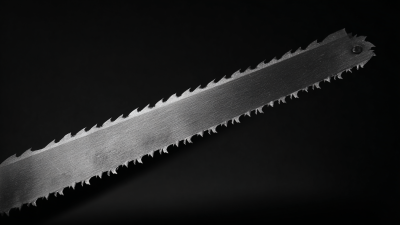
Top Strategies for Selecting the Best 300mm Reciprocating Saw Blades
-
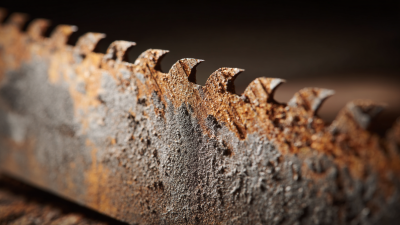
5 Essential Benefits of Using Carbide Grit Sawzall Blades in Heavy-Duty Industrial Applications
Blog Tags:






